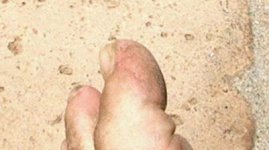Hello all, I would like to use one of those cheap single board lcd meters to measure DC current. The apparent problem is that the meter has a 200mV input. The current shunt is 50mV. Is there a way to scale the meter down? Thanks!
Hi imix500,
I think 200 mV FS is the basic sensitivity for those chips. You need to build a DC amp. DC drift may be a problem unless you are careful with your integrating cap type and op amp. Leakage paths need attention too.
-Chris
I think 200 mV FS is the basic sensitivity for those chips. You need to build a DC amp. DC drift may be a problem unless you are careful with your integrating cap type and op amp. Leakage paths need attention too.
-Chris
The dc amp seems correct, I wish I could find a 200mV shunt.
Hmm, I found an article that suggests that because the a/d convertor needs no current for measurement, full scale input isn't needed. A sample schematic shows a 50mV shunt resistor feeding a 200mV meter. Here is the page:
http://sound.westhost.com/articles/meters.htm
Does this sound right?
Hmm, I found an article that suggests that because the a/d convertor needs no current for measurement, full scale input isn't needed. A sample schematic shows a 50mV shunt resistor feeding a 200mV meter. Here is the page:
http://sound.westhost.com/articles/meters.htm
Does this sound right?
What is the maximum level of DC current you wish to measure?
There are several sources for many types of shunts... a shunt is merely a precise resistor with 4 contacts.
For maximum accuracy, you should use the full scale that is available to you. Unless, of course, this gives you some really weird conversion factor for your displayed value.
🙂
There are several sources for many types of shunts... a shunt is merely a precise resistor with 4 contacts.
For maximum accuracy, you should use the full scale that is available to you. Unless, of course, this gives you some really weird conversion factor for your displayed value.
🙂
Hi imix500,
All you really need is a resistance that scales your FS current to a convenient range with the meter if you are willing to use a different shunt. You can use less than the full scale keeping in mind that you may possible lose some resolution - or not. If you want 5A FS, your 50 mV shunt is correct the way it is.
A four terminal resistor is the best, make your sense traces come off so you don't share any part of the trace with the load current.
To start, what current do you want to measure?
-Chris
All you really need is a resistance that scales your FS current to a convenient range with the meter if you are willing to use a different shunt. You can use less than the full scale keeping in mind that you may possible lose some resolution - or not. If you want 5A FS, your 50 mV shunt is correct the way it is.
A four terminal resistor is the best, make your sense traces come off so you don't share any part of the trace with the load current.
To start, what current do you want to measure?
-Chris
You guys crack me up. I was thinking a nice round number like... 50A. it's for a water cooled test rig for power supplies.
Not too many 200 mV panel-mount shunts around really...
There are 50 & 100 mV meters easier to find than you may think... if you go with this aproach... you can put the decimal where you like and have a direct reading - no math (helps to keep one's shoes on when testing power supplies... never know when you might have to run like hell... cut's down on shocks too).
Mouser has a good selection of board mounted shunts.
🙂
There are 50 & 100 mV meters easier to find than you may think... if you go with this aproach... you can put the decimal where you like and have a direct reading - no math (helps to keep one's shoes on when testing power supplies... never know when you might have to run like hell... cut's down on shocks too).
Mouser has a good selection of board mounted shunts.
🙂
Hi imix500,
I have to agree with the big furry guy. He's right!
Now it's my duty to point out that whenever poobah starts with toes there is an uncertainty. No one has seen how many toes he has in many years. He claims to have five, but I think there are only four like in every cartoon character. 😉
-Chris
I have to agree with the big furry guy. He's right!
Now it's my duty to point out that whenever poobah starts with toes there is an uncertainty. No one has seen how many toes he has in many years. He claims to have five, but I think there are only four like in every cartoon character. 😉
-Chris
anatech said:No one has seen how many toes he has in many years. He claims to have five, but I think there are only four like in every cartoon character.
He may not even have that many...
Attachments
........ ahhhh. That doesn't look like your hand poobah. If it is you must have just shaved your hand (and can't do a thing with it). I imagine it's easier to light a smoke that way. 😉
Can't you take a 1 ohn resister in series with the circuit and measure the voltage across it. The ratio is 1 to 1.
Or did I miss something and just show my @ss again?
Or did I miss something and just show my @ss again?

Indeed, but it was more about the watch, that was taken back in those days when I actually cared what time it was. Wookiee hair doesn't burn.
😎
😎
Hi David,
Doing some math, 0.1 ohm gives us 5 V at 250W. That direction is good. 0.01 ohm is 0.5V and 25 W and 0.001 ohm will develop 50 mV and dissipate 2.5 W. That is still a hot part. More power may be wasted in the connections now. 😉
This is looking like a length of warm wire. Consider a linear hall element?
-Chris
50A times 1 ohm would be 50 V, certainly easier to measure. It also means that we will dissipate 2,500 W and require that the power supply be capable of 50 V more output voltage. Not good if we are testing a 5 VDC power supply at 50 A, or 2.5 VDC at 50A (for plating).I was thinking a nice round number like... 50A.
Doing some math, 0.1 ohm gives us 5 V at 250W. That direction is good. 0.01 ohm is 0.5V and 25 W and 0.001 ohm will develop 50 mV and dissipate 2.5 W. That is still a hot part. More power may be wasted in the connections now. 😉
This is looking like a length of warm wire. Consider a linear hall element?
-Chris
- Status
- Not open for further replies.
- Home
- Design & Build
- Parts
- Making a Voltmeter into a Current meter

